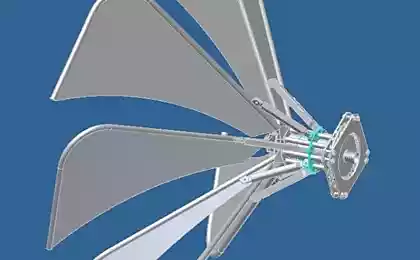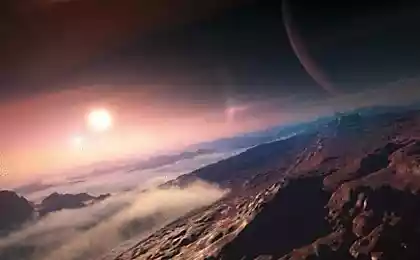483
Scientists have determined the rotation rate of the exoplanet Beta Painter b
Spectroscopic observations of a young exoplanet have allowed to measure the speed of its rotation around its axis.
Reflected and emitted by the majority of exoplanets light is lost in a bright light of their stars, which makes it difficult their direct detection and study. A significant part of the detected exoplanets were discovered by the transit method, photometry – monitoring the changing brightness of stars caused by the passage over the disk of these stars orbiting around planets. Only a few gas giants have been detected by direct observations, including exoplanet Beta Painter b.
System Beta Painter is very young, its age is estimated at only about 20 million years (the age of the Solar system 4.5 billion years). The star Beta Painter is visible in the sky with the naked eye, it is located 63 light years from our Solar system. Planet Beta Painter b was opened in 2008. According to direct observations, the planet revolves around its star at a distance of 8-9.e. (1 astronomical unit is the average distance from the earth to the Sun), making a full rotation in 17-20 years.

The light can be decomposed into components of different wavelengths spectrum. Each light source is determined by its chemical composition, the spectral signature of the absorption/radiation. If the light source is moving relative to the observer, there is a Doppler effect – change in wavelength in the blue (when moving toward the observer) or red side (when driving away).
Done on the very large telescope observations have allowed us to use diversity in space and differences in spectral signatures between the star and planet to highlight the light coming directly from the planet.
Scientists have found the Doppler shift of carbon lines in the spectrum of the planet is relatively similar in the spectrum of the star allowed us to estimate the velocity of the planet along the orbit – about 15 km/s. The spectrum of a planet is shifted in the blue direction, it moves towards us. Set the value of the velocity is consistent with the data along the orbit and the orbital period of the planet.
The planet's rotation around its axis leads to a decrease in the depth and broadening of spectral lines: half of the planet is moving towards the observer, shifting the spectral lines in the blue side and half from the observer, causing the red shift. Calculated on the basis of this phenomenon, the Equatorial velocity of rotation was equal to 25 km/c (two times more than Jupiter).
Such a high rotation speed Beta Painter b is consistent with the detected in the Solar system regularity: the higher the mass of the planet, the higher the speed of Equatorial rotation. This rule has two exceptions are mercury and Venus, because of their gravitational interaction with the Sun. Beta Painter b continues to cool and shrink in size in the next few hundred million years the planet reduced to the size of Jupiter. If during this process the planet will maintain their current momentum, the velocity of Equatorial rotation in the end will be about 40 km/s (depending on changes of the internal structure of the planet). This value is perfectly placed on the designated Solar system trend.
Despite the fact that the radius of the planet was not directly measured, for example, when the transiting planet is, the simulation on the basis of pictures in a variety of ranges gives an estimate of the radius of the Beta Painter b 1.65 radius of Jupiter. Given the current speed of Equatorial rotation, this means that a full rotation around its axis of the planet makes approximately 8 hours.
The researchers expect that their method once used will map the surface of planets. There are high hopes for the European extremely large telescope with diameter of main mirror of 39 meters, which should see its first light in 2020.
"We will be able to create maps, even for planets much smaller than the Beta Painter b," said Bernhard, Brandl, one of the authors published work today.
According to the materials of Nature (1, 2) and ESO.
Source: nkj.ru
Subconscious influence of pheromones or you'll know it by the smell
Physicists have proven the use of wet sand in the construction of the pyramids























